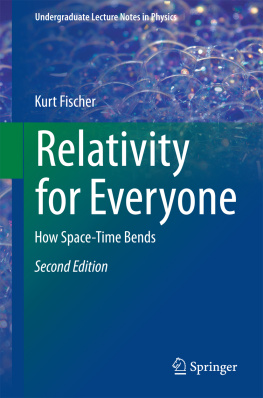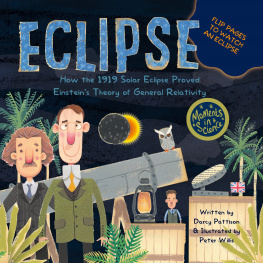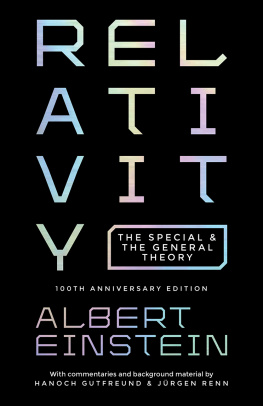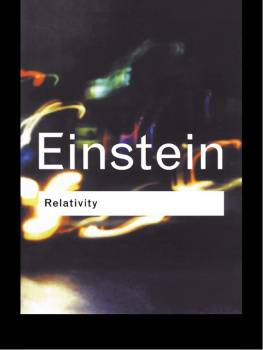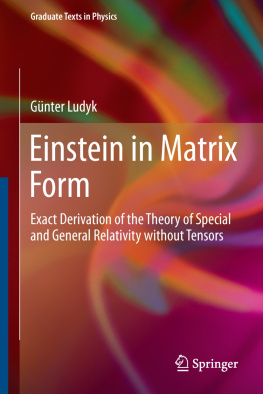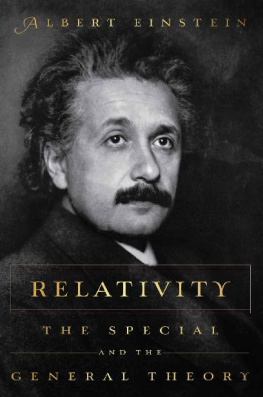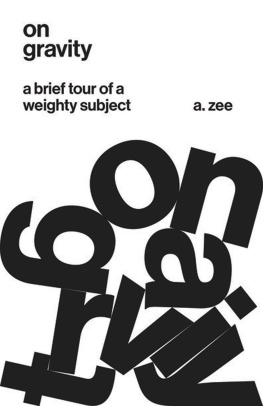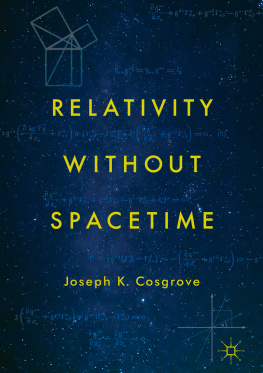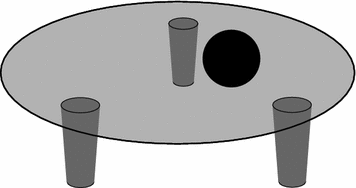Springer International Publishing Switzerland 2015
Kurt Fischer Relativity for Everyone Undergraduate Lecture Notes in Physics 10.1007/978-3-319-17891-2_1
1. Light, Matter, and Energy
1.1 Light Beams
An astronaut floating in space switches on a torch or a laser beamer. The emerging light beam travels at the speed
This is the speed of light in vacuum Exactly .
How can we verify this? First of all, we need an apparatus to send a light beam such as the box on the left in Fig.. It is open to the right. This box symbolizes the torch, or the laser, or the sender for short. The black horizontal arrow stands for the light beam. It travels through the gray box on the right which is some speedometer measuring the speed of the light beam in meters per second. We will not discuss what constitutes such an apparatus: we just assume that there are such devices.
1.2 First Law of Relativity: Straight, Steady Speed Is Relative
Does the speed of light change if we move the torch while sending a light beam? This prompts the question: is moving relative to what?
If we are moving in a fast train, we do not feel the steady speed of the train but only feel a slight tremble: that is the non-steady part of the speed. For example, in Fig. a table stands inside a train. The train is moving straightly and steadily. The black ball will not begin to move on the table. Do you feel the tremendous speed while sitting at a table at home and feeling to be at rest? Which speed? For example, we could be referring to the tremendous speed at which the Earth is moving around the sun at least during a few minutes, say nearly straight and steady, or the speed at which the whole solar system is moving along the galaxy and/or the speed at which the galaxy is movingto where?
Fig. 1.1
Light beam from left to right, sketched as black horizontal arrow . The box on the left stands for some sender like a torch or a laser; the gray box on the right is the light-speedometer, displaying the speed of light
Fig. 1.2
The ball on the glass table in a train will not begin to move on the table, if the train moves straightly and steadily
Since Galilei at the end of the Middle Ages, we know that we cannot detect the speed if we are steadily moving straight ahead in some direction, by any means whatsoever . We can always take the point of view that we are at rest in the same way as we do when we sit at a table. Even while sitting at table in a train that is steadily moving straight ahead, we can say that we are at rest and the whole station, plus the surrounding area we pass through, is moving towards us. At the same time, a friend standing on the platform of the station objects: of course the train is moving towards the station and the station together with the Earth around it are at rest!
What is correct? Answer: both we and our friend are right about insisting to be at rest: the train is moving only relative to the train station and the Earth around it. This is the first law of the theory of relativity formulated by Galilei a few hundred years ago:
The speed of straight, steady motion of a body can only be measured relative to other bodies. The laws of nature do not depend on a straight and steady speed at which we may move relative to other bodies.
1.3 Measuring the Speed of Light
We measure the speed of the bodies in Fig. relative to the ground. While sending the light beam, we move the torch towards the speedometer relative to the ground at say 10,000 meters per second, whereas the speedometer rests relative to the ground. To avoid that anything might disturb the light beam, we assume a vacuum, i.e. no air above the ground.
Fig. 1.3
Now the sender moves towards the speedometer at 10,000 meters per second relative to the ground. The ground is indicated in dark gray
Nevertheless, the speedometer shows the very same speed of light! Now, this does not sound strange. Here is an analogy: replace the torch by a loudspeaker and the speedometer for light by a speedometer for sound, as in Fig.. We drew the sound as a white arrow. We depicted the calm air as light gray background. The sound travels through the calm air at a speed of about 343 meters per second.
Fig. 1.4
A loudspeaker moves towards the speedometer at 40 meters per second. The speed of sound remains the same as if the loudspeaker would rest
The sound travels through the calm air and so its movement does not feel the moving loudspeaker. We will measure the same 343 meters per second, even if the loudspeaker travels towards the speedometer at 40 meters per second. So, is this not a very similar situation as the light beam?
No, next we will set the loudspeaker at rest inside the calm air and move the speedometer towards the loudspeaker at the same 40 meters per second.
Since the sound moves relative to the calm air to the right at 343 meters per second and the detector also moves relative to the calm air to the left at 40 meters per second, we will measure a sound speed of
This is sketched in Fig..
Fig. 1.5
If the speedometer is moving towards the loudspeaker which is resting in the air we measure a larger speed of sound
1.4 Second Law of Relativity: The Speed of Light Is Absolute
Next we repeat that thought experiment with light, as in Fig..
Fig. 1.6
If the speedometer moves towards the sender, the speed of light does not change
The astonishing result is that for light the speedometer still shows the same speed of light! That means that light does not need any medium like air to travel. Light travels as such through the empty space. What is more, these thought experiments show that the speed of light is absolute . Therefore, as one of the c onstants of nature, it got its own name c . Therefore, to simplify calculations, physicists recently adjusted finely the length of the meter such that the speed of light has exactly the value of Eq. ().

